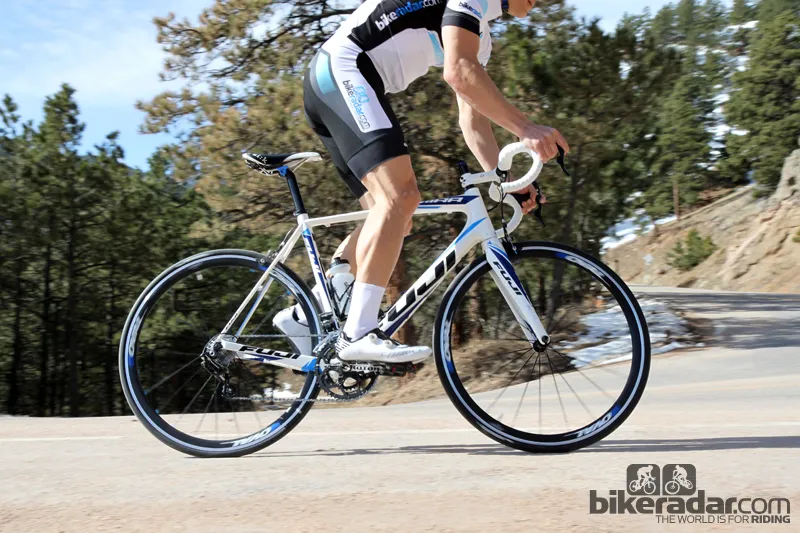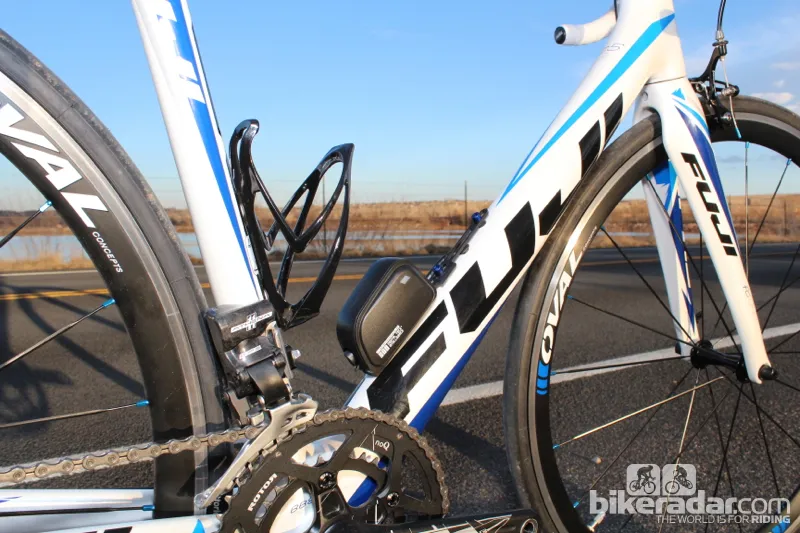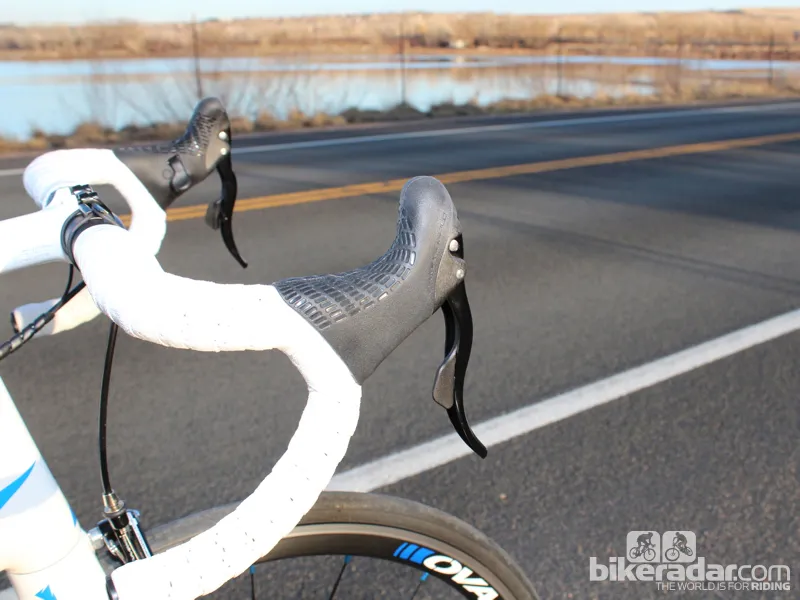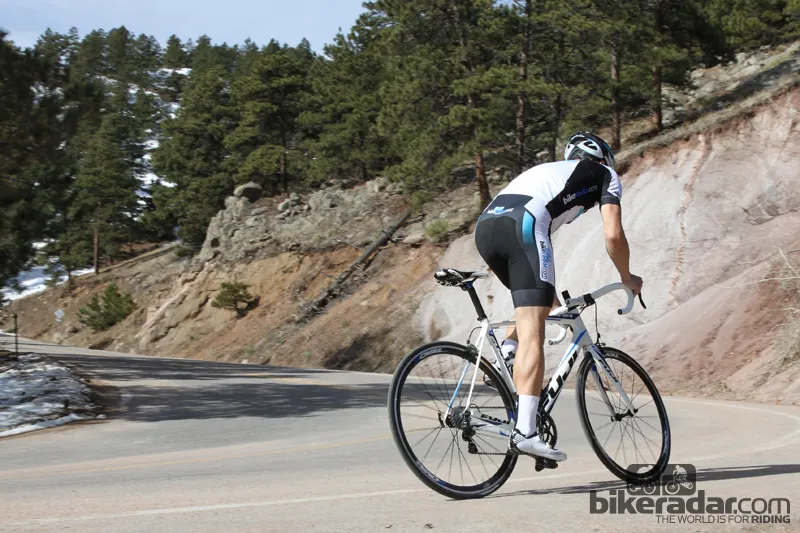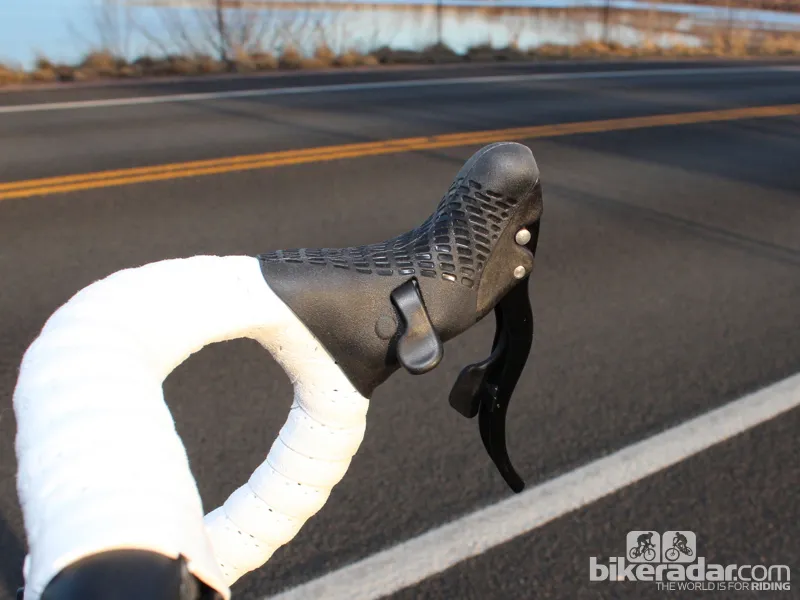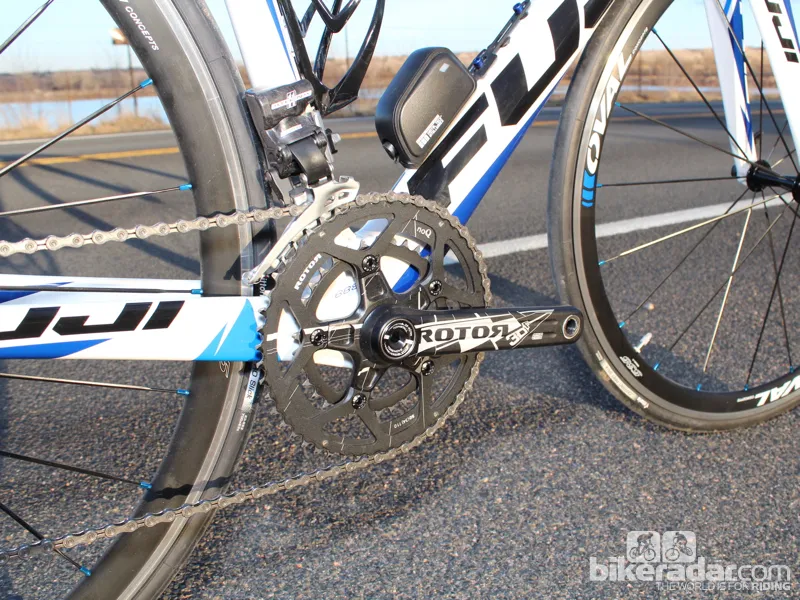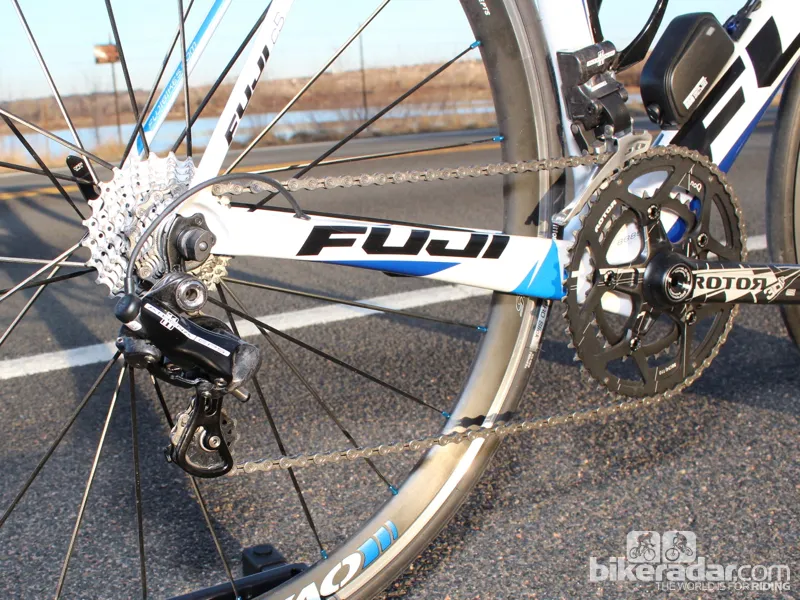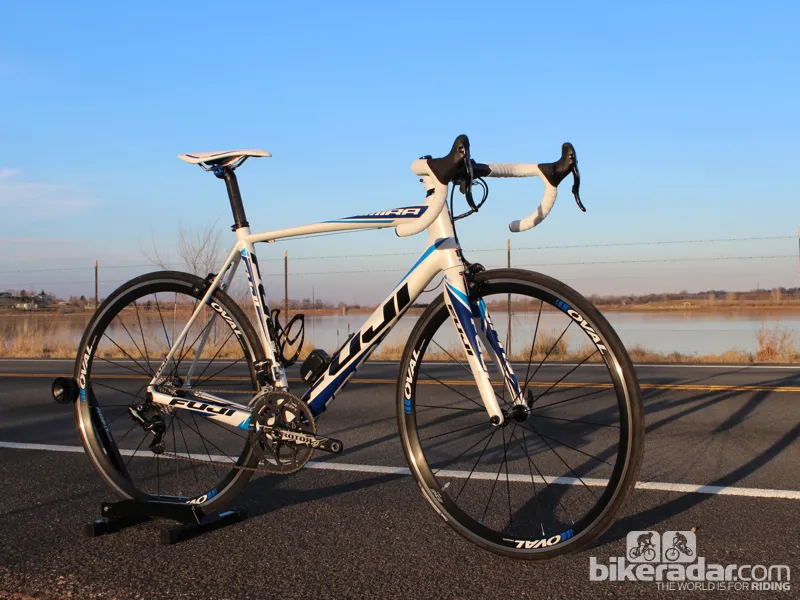Fuji’s Altamira 2.1 offers an odd mix of elements – an electronic Campagnolo Athena EPS group with a Rotor crank, somewhat aero but somewhat heavy wheels, an 11-speed drivetrain with compact gearing, and a very stiff front end with a fairly compliant rear triangle.
Athena is Campy’s fourth-tier and most affordable electronic EPS group (the hierarcy goes Super Record, Record, Chorus, Athena). But, at US$4,869, your ticket to electronic shifting isn’t cheap. With Oval wheels it isn’t, either; our 55cm test bike weighed 17.5lb (7.94kg).
- Pros: Nice-handling carbon frame; Campagnolo Athena EPS electronic group
- Cons: Heavy wheels; Athena EPS drives bike price way up
Ride & handling: Remarkably stiff front end
We’ve ridden a few carbon Fuji road and cyclocross bikes recently, and they seem to share a couple of characteristics, namely a stout front end and the remarkable stiffness that comes with it. With a 1 1/2in lower bearing, the front end of the Fuji Altamira 2.1 doesn’t flex laterally at all when you’re out of the saddle, climbing or sprinting.
For someone looking for a performance bike to race, this responsiveness would be welcome. But for someone looking for a cushier ride – as the compact gearing on the 2.1 might suggest – the high rigidity might be a little much.
That said, the bike corners confidently at speed and is decently comfortable over rough terrain. Because the front end is so stiff, we spent a few hours seeking out lousy pavement and washboard dirt roads to test compliance. While not as out-and-out plush as a Trek Domane or Specialized Roubaix, the Altamira 2.1 did pleasantly surprise us.
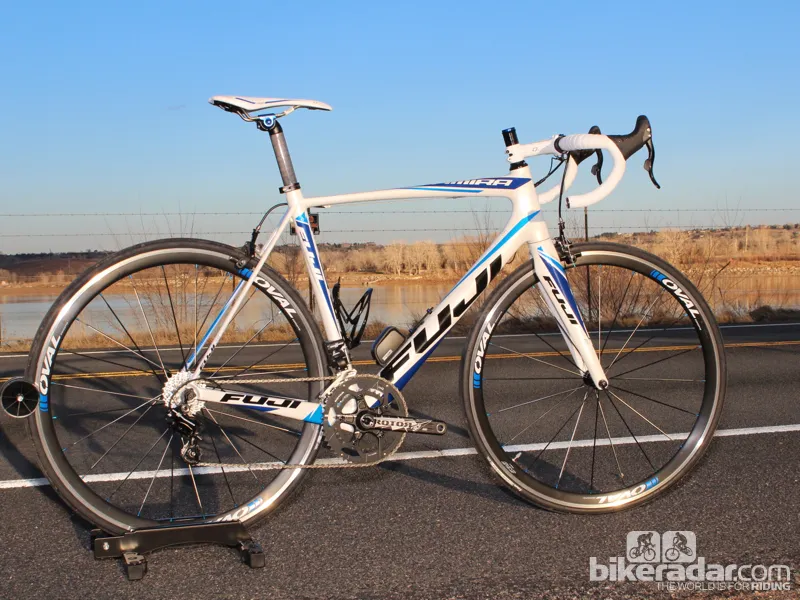
Fuji Altamira 2.1
Geometry-wise, the compact frame share dimensions and angles with Fuji’s top-end race bikes.
Frame & equipment: Electronic shifting, compact gears, heavy wheels
The three most notable things about the Altamira 2.1, equipment wise, are the Athena EPS group, the compact gearing (a 50/34 setup compared to the standard 53/39), and the house-brand Oval wheels.
If you’ve never laid hands on modern Campagnolo shifters, you should. The curved ergonomics are wonderful, and markedly different from the relatively angular Shimano and SRAM hoods. Also, Campy levers shift differently; instead of using your index or middle finger for all changes, you use your thumb for downshifts.
In terms of function, the electronic Athena is largely the same as the mechanical version, just with much less force required to execute a shift. Also, the front derailleur automatically adjusts for what the rear derailleur is doing. If the bike is in tune, you’ll never hear your chain rubbing on the front derailleur cage. As there are no cables to stretch, the derailleurs won’t need adjusting once set, either.
The 11-speed gruppo has an 11-25T cassette. Like all electronic groups, Athena EPS needs to be recharged periodically, about twice a year for most riders.
The Rotor crankset has compact gearing, which can be a tremendous help for those who like to climb mountains but aren’t gifted with Chris Froome’s power-to-weight ratio.

This interface junction has to hang somewhere on the Altamira 2.1
The Rotor crank blends nearly seamlessly with the Campy group, with the notable exception that it doesn’t shift up under power the way Campagnolo chainrings do. Make no mistake – the bike shifts fine when you’re riding normally, you just can’t be standing up and accelerating while shifting from the small ring to the large ring the way you can with an EPS group with Campagnolo chainrings.
Finally, the Oval W535 wheels. While these middle-of-the-road hoops are okay, they’re way too heavy for a bike of this price. The taller rims seems to suggest a preference for aerodynamics over light weight, but because they’re aluminum and not carbon they just add rotational weight to a bike with a compact crank, which seems to target riders who want to climb.
It’s worth noting that more affordable 2.2, 2.3, and 2.5 editions of the Altamira also exist.
